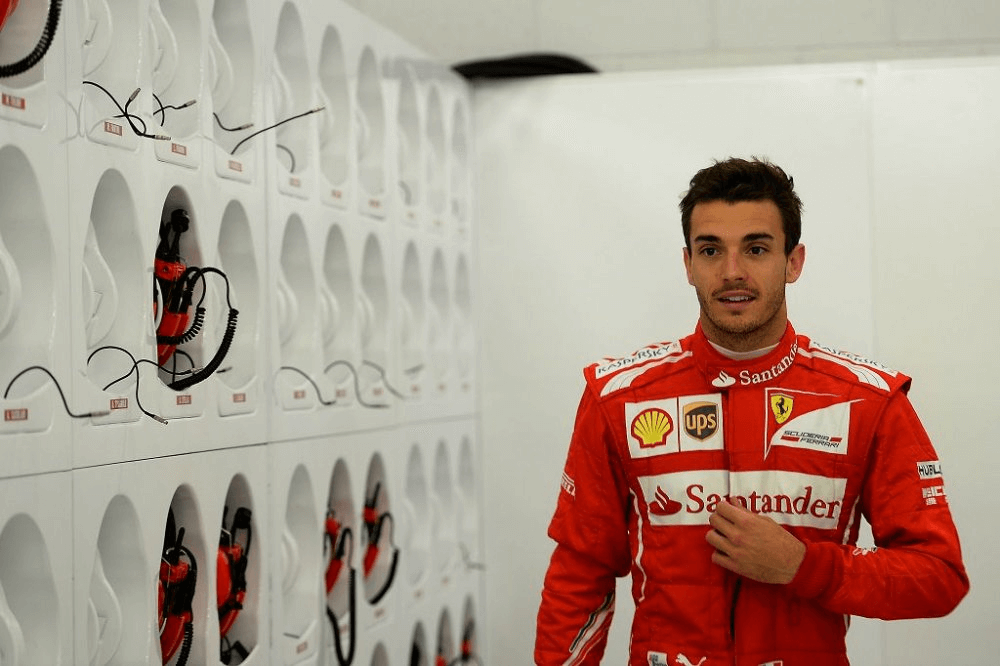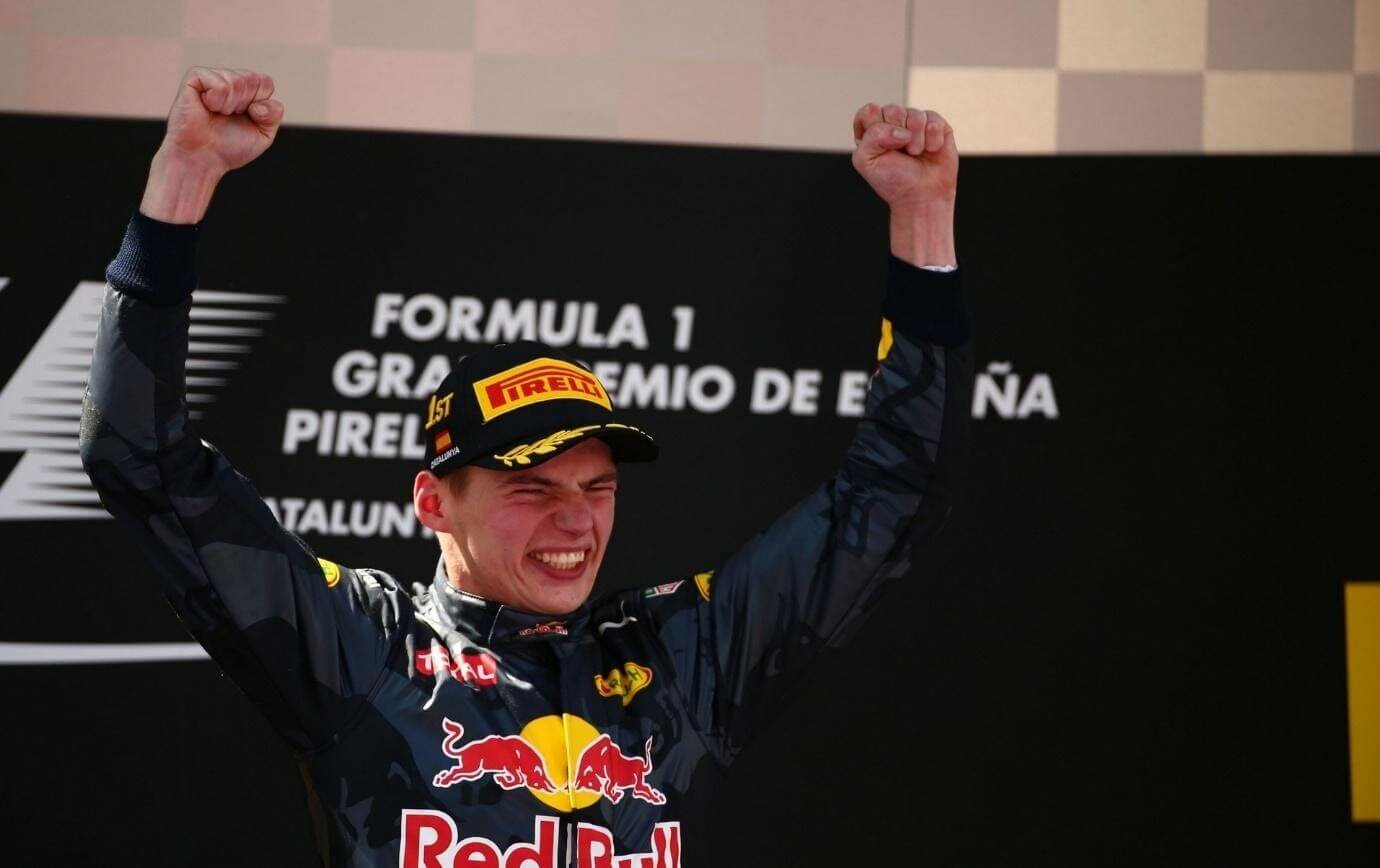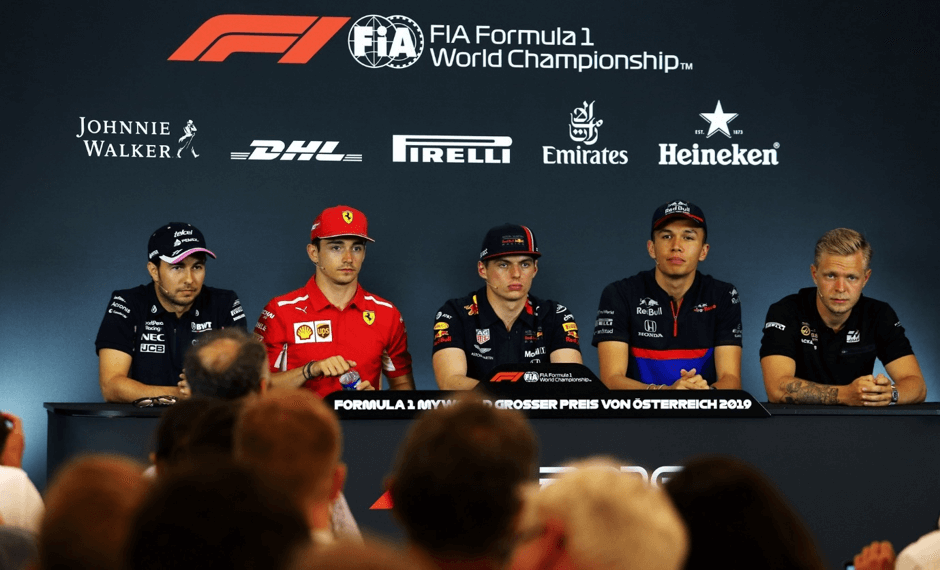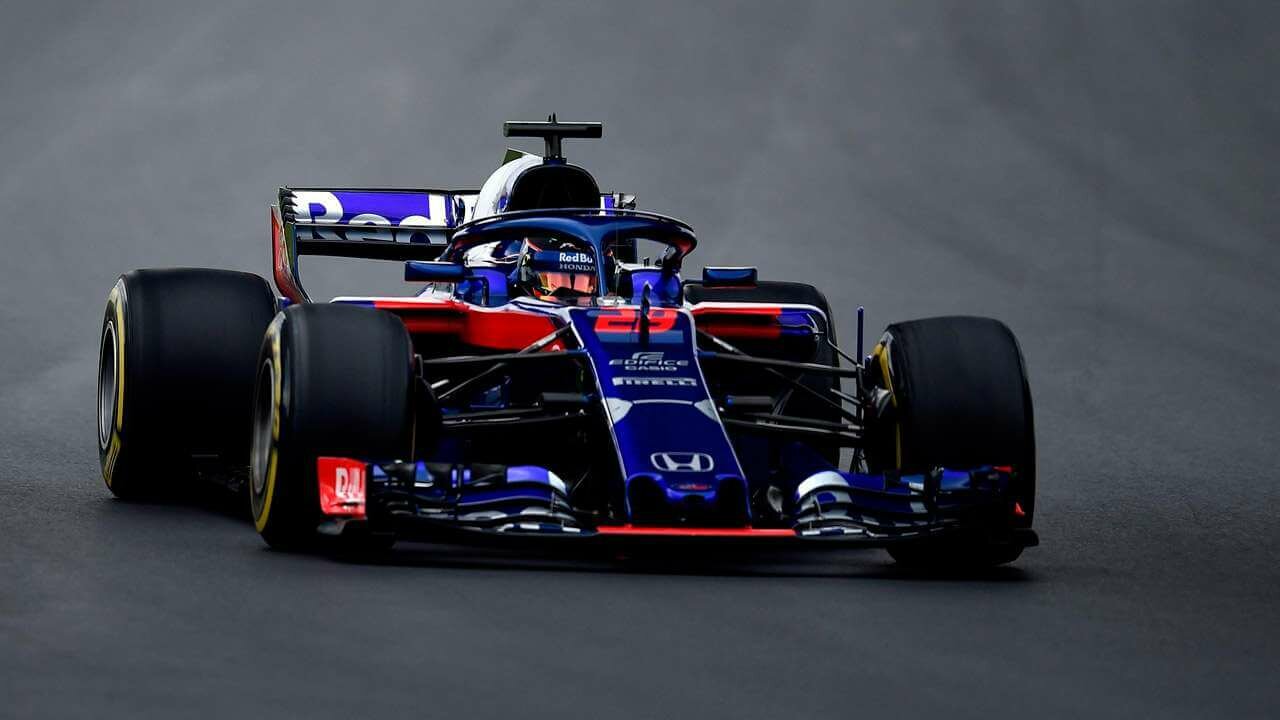
Jules seem destined for the Ferrari paddock before fate’s cruel intervention
October 5th, 2014. The Japanese Grand Prix took place in fading daylight, heavily affected by the approaching Typhoon Phanfone, causing heavy rainfall to lash down on the Suzuka Circuit. Amidst the torrential downpour, the FIA decided to go ahead with the race, which started behind the safety car with pole-sitter Nico Rosberg leading the cars followed by his Mercedes teammate Lewis Hamilton. As the safety car deployment got over, Hamilton tried to take the lead but was fended off by Rosberg. But something unwanted transpired at the other end of the track. On lap 42 of the race, Sauber’s Adrian Sutil lost control of his car due to heavy standing water at the Dunlop Curve (turn 7) of the circuit. Because of the aquaplaning, he hit the tyre barriers, which resulted in the end of his race. But what happened next shook the whole F1 world. Jules Bianchi was born in Nice, France. He was the grandson of Mauro Bianchi, who competed in GT racing and also in Formula 1, and also the grandnephew of Lucien Bianchi, who also competed in Formula 1 and was the winner of the 1968 24 Hours of Le Mans. Born in the family of former racing drivers, Jules also had a dream to become the numero uno and race for Ferrari like his idol Michael Schumacher. Bianchi entered motorsports at the tender age of 3 through karting. At 17, his motorsports career got a major boost as he was signed and managed by Nicolas Todt. Jules joined Formula Renault 2.0 in 2007, and immediately made a mark with 5 wins, ending up as the champion that year. Also competing in the Formula Renault Eurocup, he started to show his true potential on the track. Later that same year, he joined Formula 3 Euroseries and won the Masters of Formula 3 at Zolder in 2008, finishing 3 in the championship. In 2009, he sealed the title with a round to spare and then added to the title victory after winning his 9th race of the season at Hockenheim. His upward trajectory saw him then move to GP2 in 2010. Racing for Todt’s ART, he took 2 pole positions and numerous point positions before injuring himself at Hungaroring in a first lap crash. Staying with ART for 2011, Bianchi continued his good run and finished 3rd behind Romain Grosjean and Luca Filippi. Bianchi then moved to Formula Renault 3.5 in 2012, where he drove for the Tech 1 Racing team. He finished second in the title race, narrowly losing out to Robin Frijns. Bianchi already had a promising start in his quest for the Ferrari Formula 1 seat, when he was recruited as the first driver in their Driver Academy in 2009, signing up a long-term deal with the Italian giants. In 2010, he was announced as the Scuderia’s test and reserve driver for the 2011 season. He tested for Ferrari in Fiorano, recording the quickest lap time in the process. In 2012, he was loaned to Sahara Force India team, where he drove in free practice sessions as the test and reserve driver for the now defunct outfit. Having racked up a number of impressive achievements thus far, it was little surprise to see Bianchi get his big breakthrough at just 23 years of age, when it was announced by the Marussia team that he would be partnering Max Chilton for the 2013 Formula 1 season. Finishing his first race in Australia at 15th place after starting from 19th, Bianchi came close to the Q2 on a lot of occasions, often missing out by the finest of margins. Of the races finished by both Marussia drivers, Bianchi was the one leading the charts. The team decided to stick with the same driver pairing for the 2014 season. Starting the season with a no classification in Australia, Bianchi finally overcame the odds and scored his and Marussia’s first World Championship points by finishing 9th at the Monaco Grand Prix. Over the course of the campaign, Bianchi came out as the top driver for the team as he out-classified his teammate for the majority of the weekends. He also declared himself ‘ready’ to take the Scuderia Ferrari seat as Fernando Alonso’s departure loomed large over the Prancing Horse. But then, in the land of the rising sun, the darkest hour arrived, changing the whole landscape of Bianchi’s career. When Sutil crashed at the Dunlop Curve at Suzuka, the recovery vehicle was immediately deployed to remove the Sauber from the barriers. On the next lap, the 43rd of the race, Bianchi’s Marussia lost control, went off-track at the same turn and rammed into the tractor crane trying to remove Sutil’s car from the spot. The left side of Bianchi’s car was massively damaged, destroying the roll bar as the car slid under the tractor crane. The impact was so huge that the Sutil’s car, still suspended from the crane, fell down. The race was stopped on the 46th lap and the race leader Lewis Hamilton was declared the winner.

Bianchi, who struggled to control the Marussia at the soaking wet Suzuka, pictured moments before the ultimately fatal crash
Bianchi was taken to the nearest hospital. He was in a critical condition and was operated to reduce the severe bruising to his head. After the surgery, he was immediately admitted into intensive care. He suffered a diffuse axonal injury and was in a critical but stable condition. At the next race, the inaugural Russian Grand Prix, Marussia decided to field just one car, out of respect for Bianchi. Marussia adopted a ‘#JB17’ livery on the cockpit sides and every driver wore a sticker on their helmet saying “Tous avec Jules #17” (“We’re all with Jules #17”). On July 17th, 2015, aged 25, Bianchi succumbed to the injuries after a prolonged, nine-month battle for his life. As a tribute to the racing driver, FIA retired the race number 17. Max Chilton dedicated his Indy Lights victory to his former partner while Sebastian Vettel, racing for Ferrari, dedicated his first Hungarian Grand Prix win to Jules and his family. Recently, when asked about the five drivers he felt had been underrated during his time in F1, Daniel Ricciardo had this to say about Jules, a friend from his karting days.
“He would have been in a top team and a race-winner by now for sure. It wasn’t like Jules was underrated, but we never got to see him in a top car, so maybe people didn’t appreciate how good he was going to be. You think of his drive in that Marussia in Monaco in 2014, the team’s first point… Monaco is like Macau in that there’s no way to fluke a result there, it was absolutely on merit.”

Ricciardo, a long time friend of Bianchi’s, had no doubts about the Frenchman’s mercurial talents
“As a junior through karting, Jules was the guy,” he went on. “We met training at Formula Medicine in Viareggio in Italy and everyone, even at that age when we were all 17, everyone treated him like he was an F1 driver already. I got to know him and we became friends, and I quickly got to know who he was and what he’d done before I arrived in Europe.” Comparing him to Leclerc, he said:
“It’s like Charles is the delayed version of what Jules would have done with the success he’s having.”
As the comparisons will stay for the upcoming years as well, it’s still disheartening that a young prospect like Jules never got the top car, to help him make a mark on the grandest stage. But for all, Bianchi’s accident and death will always remain one of the darkest days in the history of Formula 1, a great racing driver gone too soon.






